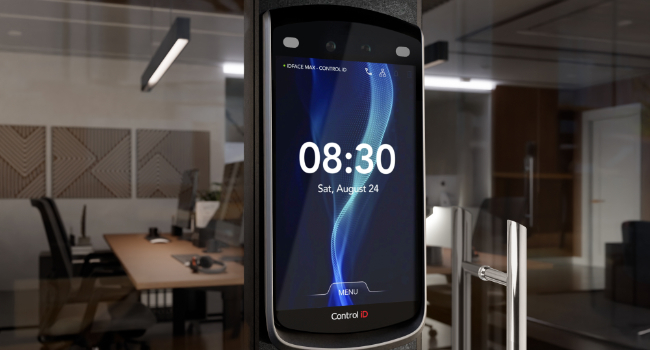
Access Control Technology
- By Peter Boriskin
- Nov 18, 2024
As we move swiftly toward the end of 2024, the security industry is looking at the trends in play, what might be on the horizon, and how they will impact business opportunities and projections.
In the door security solutions world, digital access technology is still on a strong climb. Designed to protect lives and assets, these solutions also contribute to creating more cybersecure, resilient, accessible and sustainable spaces.
Cybersecurity
Those who have experienced the security benefits and management convenience of electronic access control (EAC) appreciate how efficient the solution is for instantly and remotely issuing and modifying card and mobile credentials. EAC solutions also generate valuable data, such as audit trails that capture who is accessing a space, its use and for what they are being used.
All that data is meaningful if it can be mined for further purposes, such as better allocation of office spaces and designing more ergonomic and energy-efficient work environments. But that data needs to be available in a highly secure and readily accessible way. As a result, the cybersecurity of physical security assets and the physical security of cybersecurity systems are mutually dependent and critical.
The key is to ensure that data is stored securely so it can be delivered, retrieved and mined safely. Data centers and the cloud offer perfect ways to accomplish these objectives. When data is reliably secured, meaningful things can be done with it if approached intelligently, creatively and carefully. Door and access control manufacturers that offer everything from perimeter barriers and specialty door solutions to intelligent server cabinet locks are playing a significant role in this arena.
Regarding AI it must be vigilant when it comes to cybersecurity, especially since there is no gold standard for AI. With its more sophisticated hybrid of tools, AI can learn about you and probe for vulnerabilities. That means everyone is focusing more attention on intercepting behaviors such as spear phishing before they can breach access-controlled spaces and systems, including critical infrastructure.
The upside of AI is improved efficiently to identify suspicious behaviors that might lead to such a breach and then prompt further investigation. Machine learning and artificial intelligence deployed more widely within video surveillance and access control systems to automatically reduce the number of false alarms instead of assigning someone the mind-numbing task of monitoring video feeds and access events all day.
Another trend is how integrated access control, video management, and other unified life safety digital components enable more systems built on open architecture platforms. This provides extended interoperability among various manufacturers’ software and hardware solutions, easier updating to maintain cybersecurity and performance, and longer life cycles to amplify sustainability and resilience.
Resilience is on more minds than ever before as well. Think about the massive storms that have hit the southern United States this year, what Houston has experienced with the loss of its power grid, and the effect those events have had on livability, communication, productivity, and, of course, security.
A good application of resiliency in such areas is where doors equipped with IP-enabled, battery-powered access control locks can continue making access decisions and store their own data. The system’s ability to maintain secure access means there is no need to switch to manual alternatives during outages.
Add gasketed hurricane-rated openings in preparation for storm events, and a building can keep wind and water at bay for hours or even days. Subsequently, more customers are specifying multi-attribute specialty doors designed to be fire and windstorm-protective and/or provide attack resistance to stand up to all kinds of threats. Resilience also comes from making sensible business decisions like ensuring door security solutions are “fit for purpose” and not succumbing to far less durable choices.
Sustainability continues to trend upward, especially with green building activity growing at twice the rate of traditional new construction, and access control solutions are contributing significantly to its progress. More than 10% of a building's energy waste flows freely through its windows and doors. Simple access control measures and better thermal breaks and seals can have a positive impact by allowing customers to keep doors closed and heating and air conditioning in.
T
ransparency and knowledge about the sustainable ingredients and best practices used in the manufacturing processes of building products—including doors and hardware, carpet, and other materials—can help influence green building design specifications and mitigate the presence of potentially harmful substances that can affect occupant health.
Accessibility
Another trending dimension about access control solutions are how they are making places more inviting and inclusive. Biometrics like facial identification, for example, can help make spaces more accessible by quickly allowing people to pass through openings without having to use their hands to present card or mobile credentials. The convenience and benefits to those with mobility issues and other impairments or anyone looking for hands-free access are obvious.
Ultra-wideband (UWB) fine-ranging solutions are another developing trend. Mobile phone companies are putting UWB in their handsets, which can be used for indoor and outdoor positioning to track where a user is as they pass an array of UWB “anchors.” UWB on a phone used at compatible locations can help speed up access control verification. It can also track people for mustering purposes – a potential lifesaver in the case of building evacuations during a fire or other hazardous events.